Imifino, a brief introduction
Imifino or morogo. There are many names, types and ways to cook green leafy vegetables which are a culturally important ingredient in South Africa. Khanya Mzongwana shares everything you need to know about imifino plus some recipes that you can make.
Nothing is quite so remarkably versatile and universally useful as imifino, morogo or green leafy vegetables. They are as culturally shared across regions as tomatoes being cooked down into a sauce. We see them everywhere: growing wild on the side of the highway where the car is moving too fast to stop; growing between cracks in the pavement or flourishing in the gardens of people in the know. Learning how to identify which plants are edible is an important skill – learn the properties of each green vegetable to avoid eating the wrong thing, like raw nettle or worse, poison hemlock (it’s in the name, but closely resembles queen Anne’s lace blooms, which are edible).
By including imifino in our diets, we’re not only make a nutritionally generous addition to our everyday plate, but also create employment in areas where these special crops are grown and in turn preserve our local food heritage by honouring ancestral eating practices. It also has a positive effect on the environment because growing crops that are largely indigenous (only two on this list aren’t) and engaging with, growing, preserving and eating them is vital to addressing food and water insecurity under climate change.
They come in all shapes and a multitude of flavour profiles: bitter, salty, sweet, earthy. Some varieties present the tastiest kind of bitter headiness of vegetables such as broccoli or cabbage, or a natural muted saltiness found in dune spinach or pumpkin leaves. It's tempting to want to sneak spinach into this class of veggies, and you wouldn’t be right or wrong. Linguistically, imifino are greens and spinach, also being a green, precariously slots itself into this category.
Sadly, many of these vegetables are not widely commercially available, because the communities and farmers who grow this highly nutritious, largely drought-resistant produce are often not offered adequate support to easily access the mainstream food market. Many of these crops are more marginally and are gradually being forgotten as a result of colonisation, profit-cropping and the effects of apartheid. They tend to be looked down on and regarded as a waste product rather than a potential food source, despite their drought-resistance and culinary elegance. Thankfully, some local initiatives are starting to bridge the gap to make them easier to find and eat. They’re also connecting consumers to producers such as Harvesting Heritage, an organisation that works with small, independent farmers to cultivate and make environmentally sustainable indigenous crops more accessible. Read more about them here.
Let’s talk about the more prominent and widely cultivated morogo, what they are, who eats them and how they like to eat them. It’s also important to remember that not all imifino are indigenous. For example dandelion, which is native to Canada, grows rampantly in the temperate grasslands of North America.
Wild amaranth, thepe
Wild amaranth, thepe in Setswana, Sepedi and Sesotho, AND imbuya in Xhosa, is a vegetable that is often found in arid, hot environments, growing tall with blooms that resemble bushy tails and produce tiny, edible, gluten-free seeds. You get both red and green amaranth, the red being a deep purple packed with anthocyanins and champion amounts of protein. It’s slightly less common than its green counterpart, which contains high levels of calcium, iron and magnesium. Thepe is highly versatile and used in a variety of preparations, such as being added soups and stews, boiled and fried and eaten with pap or ting, or the young raw leaf tossed in a salad. Make Mokgadi Itsweng’s ludicrously delicious thepe dumplings with the recipe below.
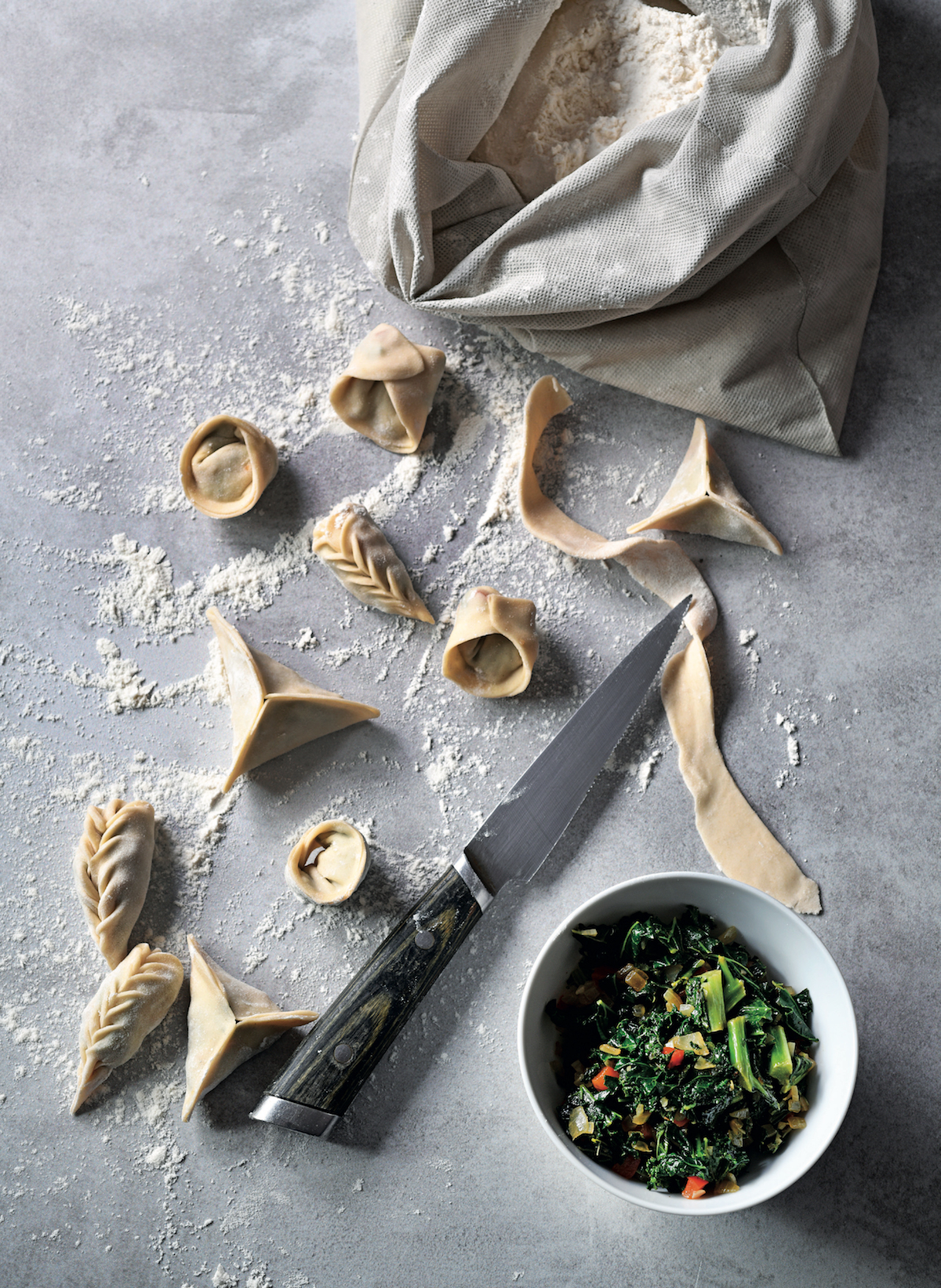
Find the recipe for morogo dumplings here.
Ihlaba
Ihlaba is the dandelion leaf, which grows wild in most regions but is eaten in only a handful of places. Largely enjoyed in the Eastern Cape, amaXhosa call it ihlaba, meaning spike; presumably because of the leaf’s pointy ridges. The stalks, when cut, produce a bitter, milky liquid, which becomes sticky as it dries, so the leaves are the real prize here. The leaves have a slightly bitter taste, which can be divisive, but some people find the peppery bitterness of ihlaba in or alongside fluffy preparations of pap refreshing, while others find it an acquired taste. They play a flavour role similar to that of rocket. Cooking it is easy, too – in some regions it’s prepared simply by frying it gently with onions and salt. The vibrant yellow flowers are edible, too, but not popularly eaten. They’re delicious steeped in boiling water and enjoyed as a fresh tea with a bit of honey.
If you’ve found an abundant supply of dandelion leaves and you’d like to make something delicious tonight, make Lipato Shogole’s recipe for umqa wehlaba below:
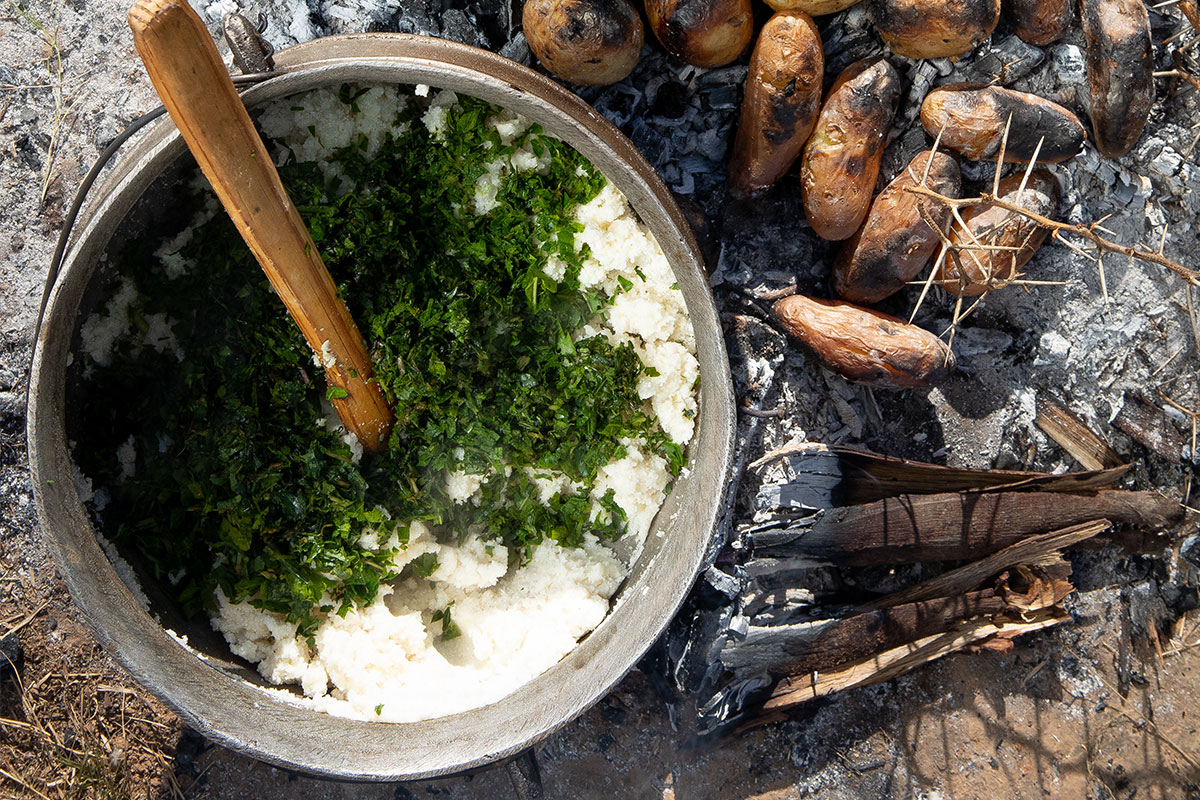
Find the recipe for umqa wehlaba (dandelion leaf pap) here.
Morogo wa Dinawa
Morogo wa Dinawa is a preserved product made from the dried leaves of the cowpea plant, produced and eaten largely in Botswana, and in some Pedi and Tswana communities. The leaves are blanched, crumpled and placed on sheets of zinc to dry out in the sun.
View this post on Instagram
The dried balls of morogo are bagged or stored in clay pots to preserve them and keep moisture out. Preserving the leaves in this way allows them to be enjoyed out of season in soups or pap, or rehydrated in a small amount of water and enjoyed as is. The cowpeas in particular are a great source of protein, beta-carotene and folate. They have a pleasantly savoury umami taste similar to spinach, but bolder. Often, the balls of dried greens are a combination of locally grown greens like morogo wa thepe, or a variety of indigenous squash leaves (marotse in Sepedi). Morogo wa dinawa is available for sale, stocked and produced by independent heritage food organisations such as Native Palate, who sources much of its raw ingredients in their neighbouring provinces of the Free State, Mpumalanga, Limpopo and the North West. If you’re in Gauteng and are looking to stock your pantry, visit nativepalate.co.za.
Dune spinach
Dune spinach, a vegetable commonly found along southern African coastlines, has gained a fairly recent popularity or following in trendy culinary spaces, despite being harvested and enjoyed by indigenous peoples for centuries. The leaf is not very similar to spinach – the bright green leaves are “frosted” and succulent, which allows them to grow well on dry sand dunes. They bring a prominent saltiness to dishes. Dune spinach is often prepared by briefly wilting it in a hot pan with water or a bit of oil, but is also just as enjoyable raw in a salad tossed with a zesty sweet vinaigrette. It’s important to take care when harvesting dune spinach, as it plays a vital ecological role creating a hospitable environment for other plant life to thrive on the dunes, so harvest with care and discernment. Carefully clip off leaves and stems and don’t disturb the roots. Try to avoid harvesting where there isn’t much growing, and make sure not to touch the damaged leaves as they may likely be under the attack of a pest. Be inspired by Kobus van der Merwe’s recipe for heerenbone with mussels and dune spinach:
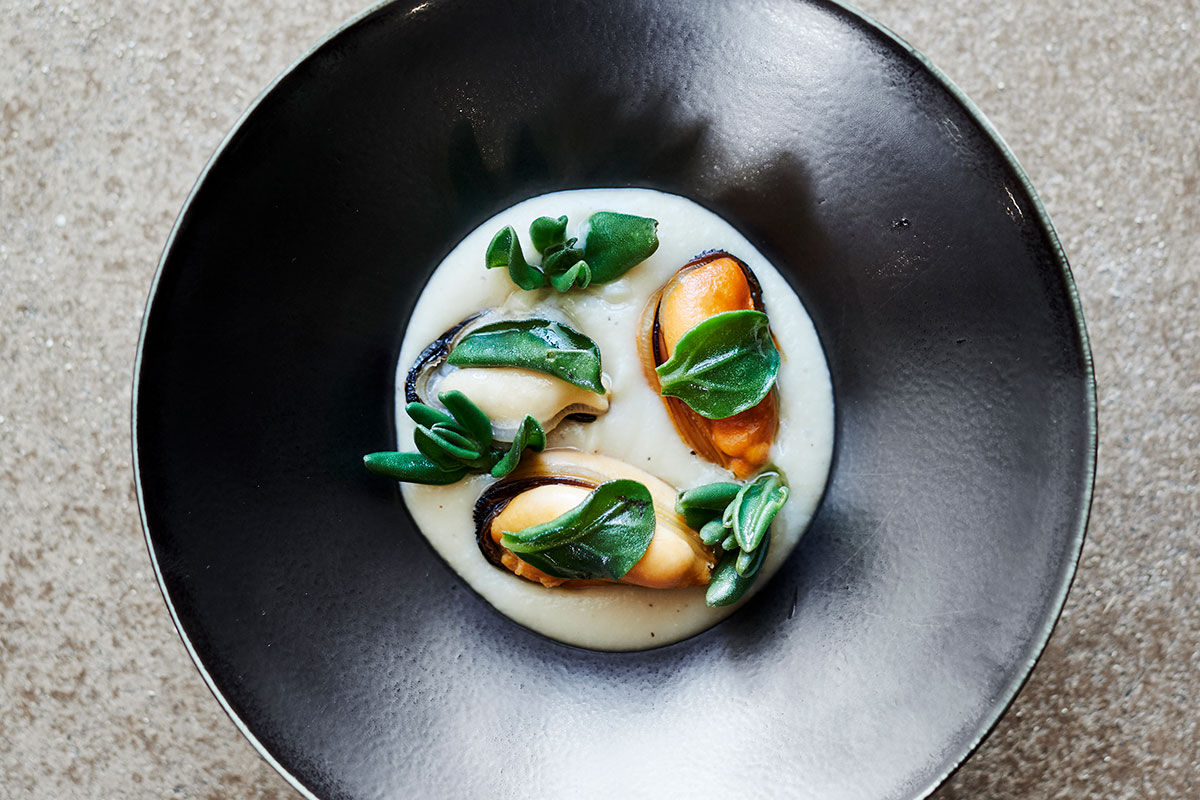
Find the recipe for heerenbone with mussels and dune spinach here.
Igcukuma/umgongozi
Igcukuma in Xhosa, umgongozi in isiZulu, ice plant, or sour fig leaf, is a salty, fat, leafy indigenous vegetable that creeps outward as it grows. It’s often used as a landscaping feature or found growing abundantly on the coastline and grows almost everywhere and produces hot pink anemone-looking flowers with yellow centers. The flower bulbs are edible too and are often dried and cooked into a sort of sweet-savoury jam/preserve called sour fig konfyt, a Cape Malay preparation where the dried buds are rehydrated and cooked down with sugar, water and spices and smeared onto scones or dolloped onto cheese plates. The leaves are salty and succulent; dice them into a tomatoey salsa or toss some into your scrambled eggs. They do get a bit of a dry mouthfeel, so tossing the cut leaves through a bit of vegetable oil is a good idea. The ice plant’s juice is traditionally used to treat throat aches and digestive issues. Make Jacques Erasmus’s sour fig jam with French-toasted flapjacks below:
Find the recipe for sour-fig jam with French-toasted flapjacks and Saint-Andre brie here.
Pumpkin leaves
Pumpkin leaves, ucetshana in Xhosa, lephotshe in SeTswana and umliba in isiZulu are a generously large, fuzzy leaf with tiny spikes along their veins. They’re often sold by local farmers and vendors in thick bunches that occasionally include their bright orange edible blossoms. You’re more likely to find these abundantly in someone’s backyard than you would your local supermarket, which is weird, right? There are all these pumpkins on the shelf but what happens to the leaves? There are a number of answers to this question: the leaves are predominantly sold to local communities in produce markets and vegetable stalls by the farmers themselves, some of the leaves are fed to livestock and a small quantity is composted, forming part of the principle of circular farming, which involves converting perceived waste products into reusable resources in the food system.
Try this sorghum-and-bambara nut farci, which I encased in blanched pumpkin leaves for my plant-based Christmas last year:
View this post on Instagram
Rich in iron and vitamin A, the pumpkin leaf is an underrated ingredient. it’s an independent type of vegetable that needs little dressing beyond being shredded and fried or blanched and lightly seasoned with salt. Don’t throw away the hollow stems, they’re delicious chopped to look like macaroni and tossed into your favourite pasta sauce. They’d also be smart in a coleslaw, umfino, umqa or stir-fry, or you could replace spinach with pumpkin leaves and add peanut butter and bambara nuts as in in my recipe below:
Find the recipe for ditloo with spinach and peanut butter here.
Stinging nettle
Stinging nettle, or irhawu in Xhosa, is a flowering shrub that is not indigenous, but is known to grow abundantly in the Eastern Cape. Its leaves that have needle-like hairs that can irritate and sting the skin if touched, which can make it an intimidating green. But on the other side of fear is a delicious feast. Steeping the leaves in boiling water for half an hour before cooking gets rid of the pesky hairs. It’s native to parts of Europe and North America, but enjoyed and grown successfully here, too. They contain vital minerals, vitamins A, C and K. They’re are often cooked with onions and melty potatoes and seasoned with salt or a stock cube. Sometimes they’re added to pap for umqa, or served alongside a stew or grilled meat.
Sources:
Lipato Shogole @hae_mahaeng
Eat.Ting, Mpho Tshukudu & Anna Trapido, p. 134 Quivertree Publications, 2016.
fondazioneslowfood.com

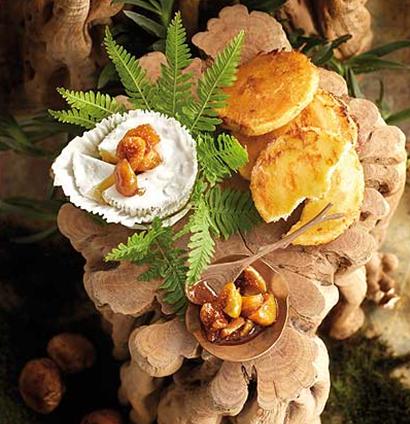
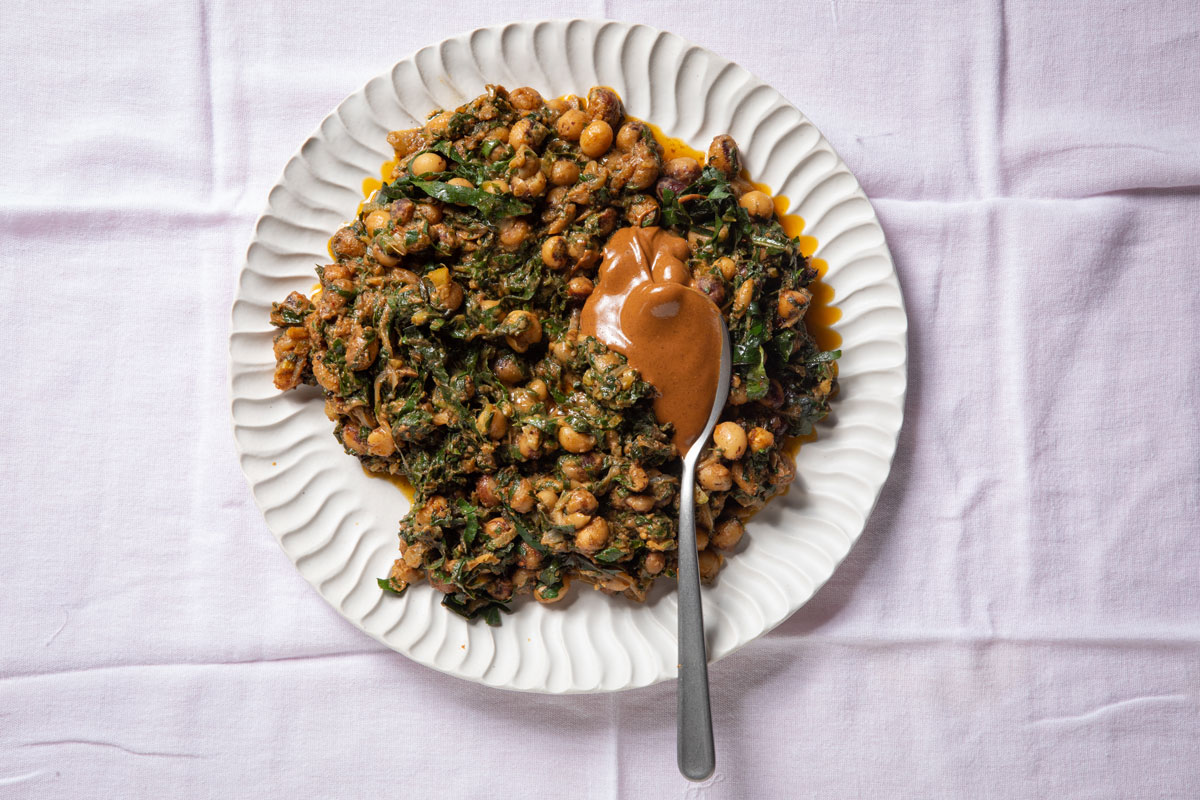

Comments